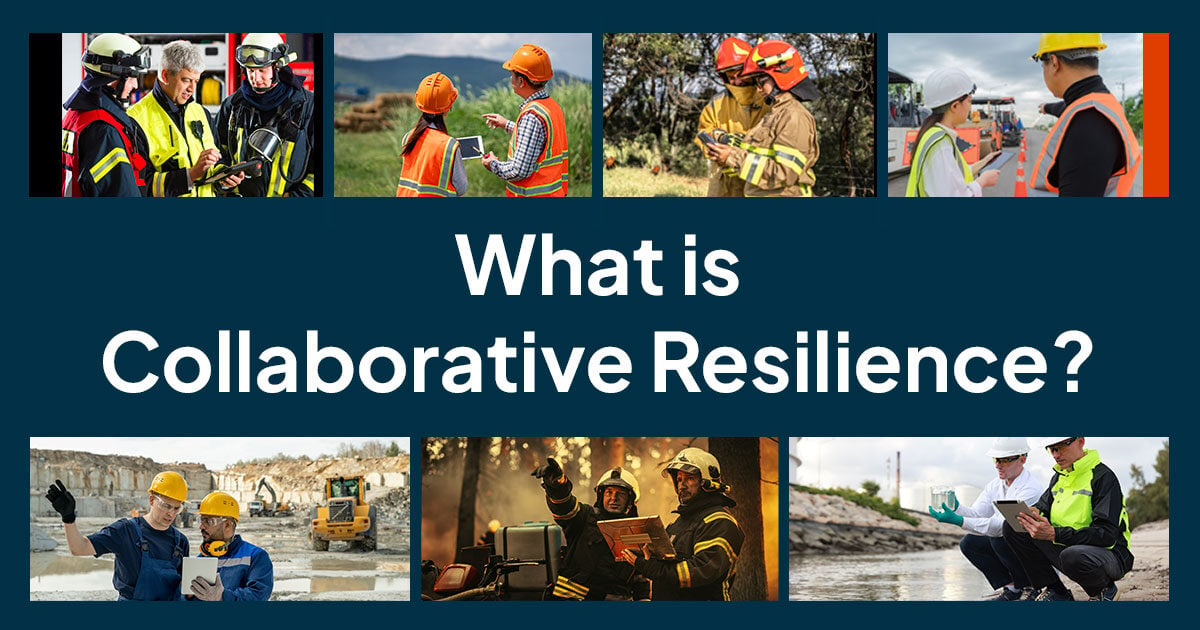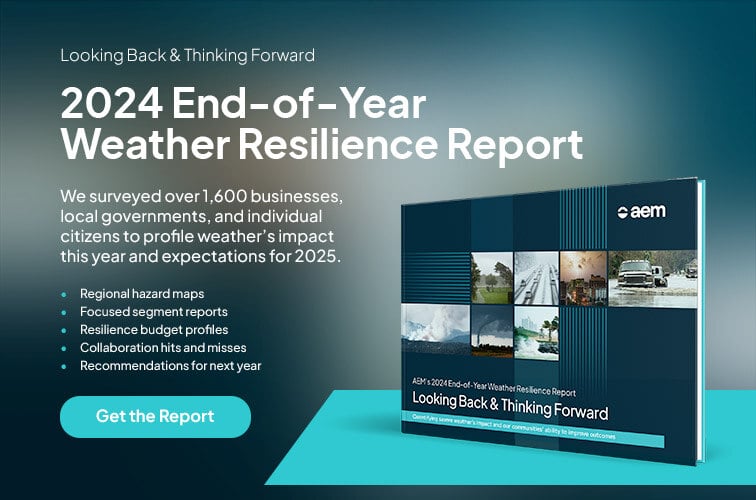
At AEM, we specialize in helping communities around the world build collaborative resilience in the face of escalating environmental risks. We believe it’s compelling work – humbly, maybe some of the most important work anybody is doing right now. But a lot of people ask us, “What is collaborative resilience, anyway?” It’s a vision that’s bigger than jargon or a post-it note pitch, so we wanted to take a minute to define our terms and explain our mission a little more fully.
Moving forward, we’ll…
- Define collaborative resilience
- Explore the key problems or challenges that collaborative resilience addresses
- Describe what collaborative resilience “looks like” in action
- Explain what’s unique about AEM’s perspective
What does "collaborative resilience" mean?
Collaborative resilience is an innovative disaster management approach that enables national, state, and local agencies, as well as commercial organizations, to plan and work together more effectively in the face of increasing environmental risks and extreme weather. It rallies stakeholders to accelerate decisive action by maximizing the visibility of relevant data about what’s happened, what is happening, and what is likely to happen in the near future as a situation plays out.
In essence, collaborative resilience transforms the way organizations coordinate, adapt, and respond to disasters by breaking down silos and fostering a unified approach to disaster management where a shared understanding of the situation and data is possible across the entire event cycle.
Why is collaborative resilience a timely approach in today’s world?
In a world increasingly impacted by climate change, effective disaster management is more important than ever. Over the last five years, the United States alone has averaged more than 20 weather and climate disasters with an economic impact of over $1 billion per year. Across the globe, temperatures, precipitation, and ocean levels are all on the rise, which means more and more people are at risk, and the problem isn’t going away.
In this new reality, improving the way we collectively prevent, prepare for, and recover from disasters has become imperative.
With that said, there are three main obstacles that have historically blocked that kind of powerful collaboration:
- Disjointed disaster management: When weather events and environmental disasters occur, preparation, response, and recovery fall across a patchwork of municipal, county, state, and even federal agencies, not to mention private sector partners and non-profit support groups. Combined, those professionals have the expertise, skills, and leadership capabilities to keep their community resilient, but the challenge of logistical coordination when time matters most is significant.
- Resource constraints: Excellent coordination across teams is especially crucial because no one agency is staffed or funded to fully “own” the impacts of extreme weather or natural disasters. Given that budget challenges are unlikely to go away, we need to get better at bringing the greater team together to achieve the shared goal of protecting our communities.
- Limited innovation in collaborative technologies: Over the last 20 years, the technology used to study, quantify, model, and even predict severe weather events and environmental disasters has grown in leaps and bounds. At the same time, solution development has stagnated when it comes to turning that information into action at ground level. We understand the challenges more deeply than ever; now, we need to figure out how to work together to improve outcomes.
Natural hazards do not respect administrative boundaries, creating a high level of interdependence between organizations. Despite this, current disaster management systems often operate in isolation, lacking the mechanisms to share risk information and coordinate effectively. Unfortunately, most organizations are not funded or incentivized to solve inter-organizational collaboration issues. This leads to fragmented efforts and reduces overall resilience.
Collaborative resilience addresses these needs by enabling organizations to work together more effectively, transcending traditional administrative boundaries.
How can communities collaborate better to improve resilience?
The first and biggest step to collaborative resilience is building a shared foundation of information. If teams and agencies with diverse areas of expertise are going to work together to solve a problem this big, they need to ingest the same data, even if they view it through a variety of different lenses and apply it in different ways. If different parts of the machine frame or view the problem differently, the collaboration is ultimately going to rattle apart, no matter how good each piece might be.
Sharing data and a common view of that data across borders fosters collaboration between local, state, regional, and national weather services, enabling a more unified response to weather events. Access to a broader set of data points—such as real-time temperature, rainfall, lightning, air quality, and fire weather data from localized networks—enables these agencies to refine their models and deliver more precise predictions. This leads to better-targeted warnings, allowing communities to act quickly and effectively.
How does AEM enable communities to practice collaborative resilience?
AEM's approach to collaborative resilience is unique in its focus on changing the way organizations collectively manage and share knowledge to enhance resilience. Unlike other disaster technology providers, we prioritize the development of systems that facilitate coordinated, adaptive, and centralized collaboration. This shift in focus from only isolated innovation to including systemic collaboration is what sets us apart. We work with emergency managers, business operations professionals, and a wide range of local leaders to help communities embrace:
- Proactive prevention and preparation: Shift from reactive management to coordinated planning, reducing risk to people and property.
- Systematic risk management: Empower data-driven decision-making, optimizing resources and enhancing community resilience.
- Connected collaboration: Foster real-time information sharing that enhances situational awareness across all response teams and agencies.
If you’re interested in learning more about how you can improve data visibility and rally your community to increase collaborative resilience, AEM is here to help! All you need to do is schedule a resiliency assessment, and we’ll help you identify opportunities to protect people, infrastructure, and resources better based on your biggest challenges and pain points.
There’s no way to fight Mother Nature on your own. Let us show you how to become collaboratively resilient.

